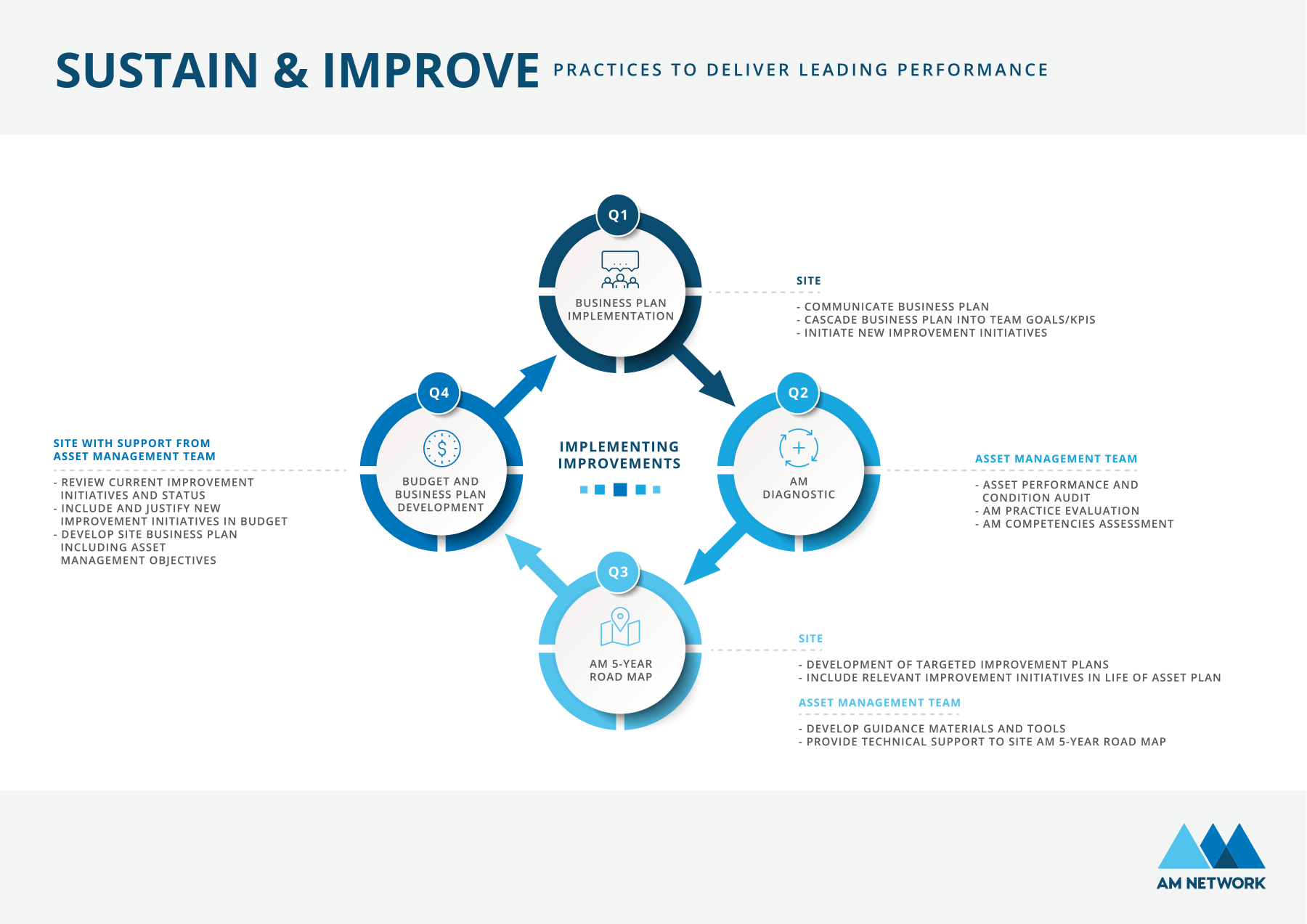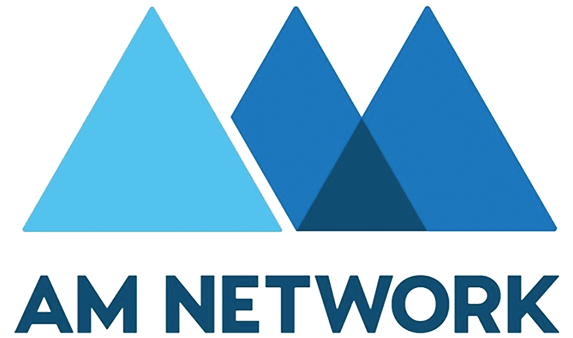BUILDING ASSET MANAGEMENT INTO THE ANNUAL BUSINESS CYCLE
This is Phase 6 of 6 focused on sustaining and improving on the gains made by building Asset Management into the Annual Business Planning Cycle.
Sustaining momentum and building a culture of continuous improvement is critical for ongoing success.
It is critical to defend against the “do-over”. It’s when you need to go back over the same processes and practices again and again. The dominant causes for this common problem are:
- Turnover of key people and a lack of effective succession planning
- Lack of effective document management and control of the document management system
- Managing asset management initiatives as projects rather than embedding them into the way we lead and manage the business
- Lack of change management and capturing the hearts and minds of the people effected.
Turnover is a fact of life in business and some controlled turnover is healthy to bring new ideas and innovations into a business. It becomes a problem when turnover is out of control and there is no clear succession planning in place to ensure key positions are quickly filled.
Document management is a chronic problem is many businesses, especially in asset management where there are many thousands of documents required to effectively manage the assets. This is where an agreed and well understood Asset Management Framework and hierarchy of documents can help, supported by a SharePoint site where there is a “single source of truth”.
Managing asset management initiatives and improvement overall requires a thorough understanding of the key drivers, processes, and systems of the business at all levels. It also requires effective measures from the Board room to the shopfloor, knowing that “what gets measured, gets managed”. If a level is missed or there are ineffective measures, cracks and gaps will start to appear.
Capturing the hearts and minds is often overlooked including not having an agreed change management process and communication strategy. Many of the people managing businesses are engineering and technical people. In their minds, as long as there is a specification and a procedure the job will get done correctly. Unfortunately, information can be misinterpreted or not read at all if the people using the documentation are not engaged and the benefits to them demonstrated.
WHAT CAN WE LEARN FROM SAFETY?
Thirty years ago, the mining industry tackled the safety culture head on. In summary the major changes included:
- Moving accountability for safety from the health and safety department to everybody
- Developing standard systems, processes and procedures
- Focusing on behaviour-based training and competencies
- Embedding lead and lag key performance indicators at every level
- Spending time in the field to demonstrate to people the behaviour and standards we are willing to accept
- Safety becoming a core value in “the way we worked”
The asset management community have learnt from the safety journey, but WE NEED TO AGREE ON THE FUNDAMENTALS.
Doing it right for 95% of the time is not good enough! There are no shortcuts, it is hard work. We need to agree on the fundamentals:
Capable leaders and people who:
- Have the courage to lead change and set direction via a robust framework
- constantly engage each other, evaluate performance and conformance to the framework and close gaps
- manage asset risks within their authority limits and communicate upwards those risks requiring higher authority limits
- have patience, perseverance, and work together to realise the vision
Effective processes and practices and supporting systems to:
- continually assess asset condition and detect defects early
- manage all work on assets (maintenance work and shutdowns) with discipline
- routinely analyse and eliminate defects and losses
Reliable assets that are consistently effective through:
- designing or acquiring assets for optimal safety, reliability, maintainability and life cycle cost
- installing and maintaining assets with precision
- operating assets within agreed limits
Another effective way of sustaining and improving Asset Management is to build it into the Annual Business Planning Cycle with each quarter having a distinct focus:
Q1 Implement business plan which continues all year, implementing improvements.
Q2 Carry out AM Diagnostic to measure progression of maturity and any new improvements.
Q3 Develop or update the AM Improvement Roadmap
Q4 Develop the following year’s budget and business plan.

Want to know more?
If you want to know more about this insight or would like to discuss anything relating to Asset Management including Engineering Governance, Operational Readiness, Maintenance, and Reliability Improvement, don’t hesitate to talk to us!
